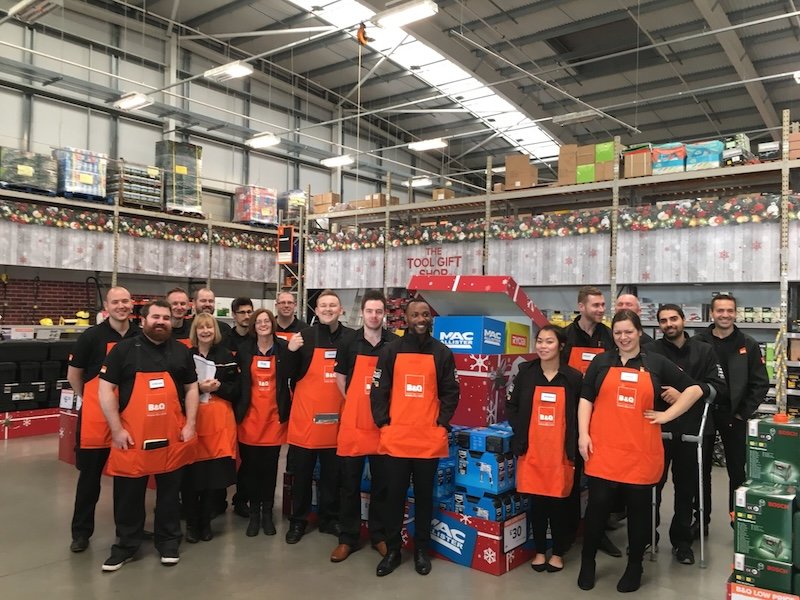How to turn data into a retail opportunity
By Kees Jacobs, Vice President, Global Consumer Products and Retail Sector, Capgemini
Today’s retail landscape is virtually unrecognisable from just two decades ago. For many retailers, however, it is still business as usual as they continue to rely on the tactics that brought them success in the past: prioritising stores and B2B channels, engaging in mass marketing campaigns, and eliminating unprofitable niche products.
Many traditional retailers expect these tried and tested methods of the past to continue to yield the same results in the future. But a considerable number of established players are struggling to remain relevant due to the rise of digital, the entrance of challenger brands, and rapidly changing consumer preferences.
This new environment calls for a radically different approach. Insights-based decisioning – which leverages data analytics to improve business decision-making – holds great promise for helping retailers to more accurately anticipate market shifts, better understand business dynamics, predict customer behaviours and manage risk.
The benefits of insights-based decisioning
In the current business landscape, organisations are expected to deliver shareholder value each quarter. As such, it can be difficult for executives to advocate for any change that does not generate immediate returns. Perhaps the most important aspect of adopting an insights-based decisioning model isn’t just that it can yield meaningful results, but that it can do so quickly and with great accuracy.
An insights-based decisioning model is also predictive – it uses data to foretell the future rather than to explain the past. While many retailers are capable of tracking fluctuations in customer purchasing, they are often unable to pinpoint which variables influence these changes and, more critically, when such shifts may occur in the future.
By considering a more robust set of data inputs and leveraging Artificial Intelligence (AI) technology to analyse these disparate sources, it is possible for organisations to generate truly actionable insights about the market, customer behaviour or business operations.
For example, our recent work in the grocery category revealed some interesting correlations between inclement weather and shopper behaviour. By analysing weather forecasts and in-store transactions, we realised that a national weather warning for frost or snow results in a 10–15% decline in typical store transactions.
“ A new environment calls for a radically different approach. Insights-based decisioning – which leverages data analytics to improve business decision-making – holds great promise for helping retailers to more accurately anticipate market shifts, better understand business dynamics, predict customer behaviours and manage risk”
At the same time, however, it triggers an uptick in business at convenience stores. To a retailer, this insight has the power to improve virtually every aspect of the value chain, enabling it to meet the consumer when and where they shop while minimising manual labour and automatically rebalancing inventory. Again, the value of this process isn’t just that organisations have a better understanding of purchasing patterns, but also that they can respond to variables in real-time.
A closing window of opportunity
Most retailers have accepted that the shift to insights-based decision-making is now imperative. However, there is far less agreement on when the journey should begin. While many businesses have begun to experiment with AI and machine learning, the vast majority have yet to adopt a business model that moves insights-based decisioning to the centre of the organisation and many hesitate to make an investment until the market absolutely requires it, which is too late.
For many organisations, the window for creating true competitive advantage from insights-based decisioning appears to be closing. For example, our recent research about the cross-functional application of AI reveals that 28% of the top 250 retailers, including those in the beauty and personal care, pharmacy and food, and grocery categories, deployed AI in 2018 – a 600% increase from 2016. That number is even higher (41%) among the top 100 retailers. Meanwhile, the vast majority of activity is focused on consumer-facing applications, with only 26% of retailers taking advantage of AI for operations.
Furthermore, our research estimated that retailers can save up to $340 billion annually by implementing AI across operations, with one of the most lucrative areas being supply chain optimisation. This figure is important to keep in mind, since one of the main barriers to AI adoption is cost.
If the headline for executives, focused on creating shareholder value from one year to the next, is that the shift to insights-based decisioning is expensive and time consuming, then I disagree; evidence shows that it is perhaps the soundest and most efficient investment a company can make. If done properly and with the right partner and the right approach, it could deliver returns, even within the quarterly earnings timeframe.
Today’s business landscape prizes speed and efficiency. It rewards those who take risks. One of the most important aspects of adopting an insights-based decisioning model is that it helps organisations reap the business benefits of this fast-paced and uncertain environment while assuming relatively little risk.
By mining data, leveraging cutting-edge analytics, and partnering with a proven leader in this field, it is possible for retailers to identify the opportunities that will deliver the most value. For many, this approach isn’t just a sound strategy – it’s the fastest way to grow.










Continue reading…